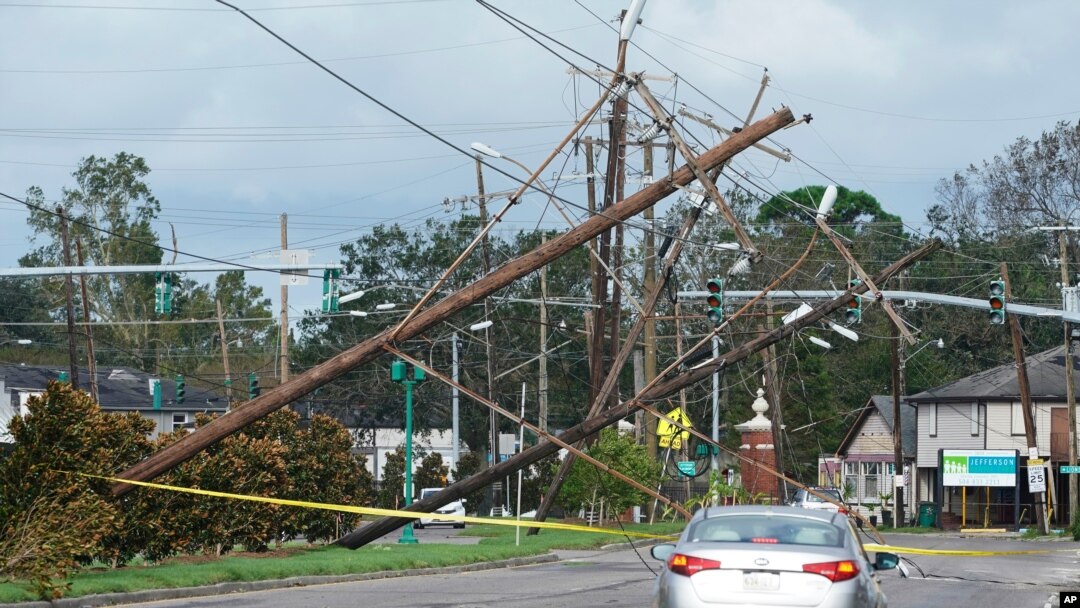Strong winds and lashing rain from Tropical Storm Ida swept through parts of U.S. southern states on Monday after leaving a trail of destruction, flooding and power outages in Louisiana, which Ida first struck as a hurricane on Sunday.
One death from a falling tree was reported in Louisiana, but Governor John Bel Edwards said that as search and rescue efforts span his state, he expects the death toll to increase “considerably.”
“There’s an awful lot of debris, power lines, trees on the roadways and in some places standing water, so it’s taken a while to get into these communities that were hardest hit,” Edwards told MSNBC. “But we will obviously be developing the situation throughout the day, saving lives, rescuing people everywhere that we can.”
Your browser doesn’t support HTML5
Ida Moves on, Leaving Millions Without Power in Louisiana
More than 1 million residents in and around New Orleans, Louisiana’s biggest city, were left without electricity, and authorities said it could be days, even weeks, before power is fully restored. The energy company Entergy said all eight electric transmission lines that feed the city are out of service, with one tower falling into the Mississippi River.
U.S. President Joe Biden talked with officials from the hardest-hit regions Monday, voicing his confidence that people in “Louisiana and Mississippi are resilient,” while assuring them that “we can certainly see the power of government respond to the needs of the people.”
“We're going to stand with you and the people in the Gulf (of Mexico), as long as it takes for you to recover,” Biden said during a virtual videoconference call at the White House.
Ida hit the Louisiana coastline Sunday afternoon as a Category 4 storm packing winds of 240 kilometers an hour, 16 years to the day Hurricane Katrina devastated New Orleans, killing more 1,800 people. By midday Monday, Ida’s winds had diminished to about 60 kilometers an hour.
At its strongest, Ida downed power lines, ripped the roof off one community hospital, breached some levees and collapsed some buildings, while leaving some people trapped on rooftops as they escaped flooding. But the Port of New Orleans said an initial assessment showed there was “no major damage” to commercial shipping facilities.
The weakened storm, still with drenching rain, continues to track to the north and east into Mississippi and parts of Alabama. Forecasters expect it to veer to the northeast through Tennessee, Kentucky and West Virginia before heading toward the national capital of Washington by Wednesday.
“The threat to Mississippi is far from over. Hunker down today if you don’t have to be on the roads,” the Mississippi Emergency Management Agency said.
Emergency management officials in Tennessee warned about the dangers of the storm in areas that that are still recovering from flash flooding that killed at least 20 people earlier in August.
Ahead of the storm, Biden signed emergency declarations for Louisiana and Mississippi and has been in touch with the governors of those two states and Alabama.
Some information for this report came from The Associated Press and Reuters.


